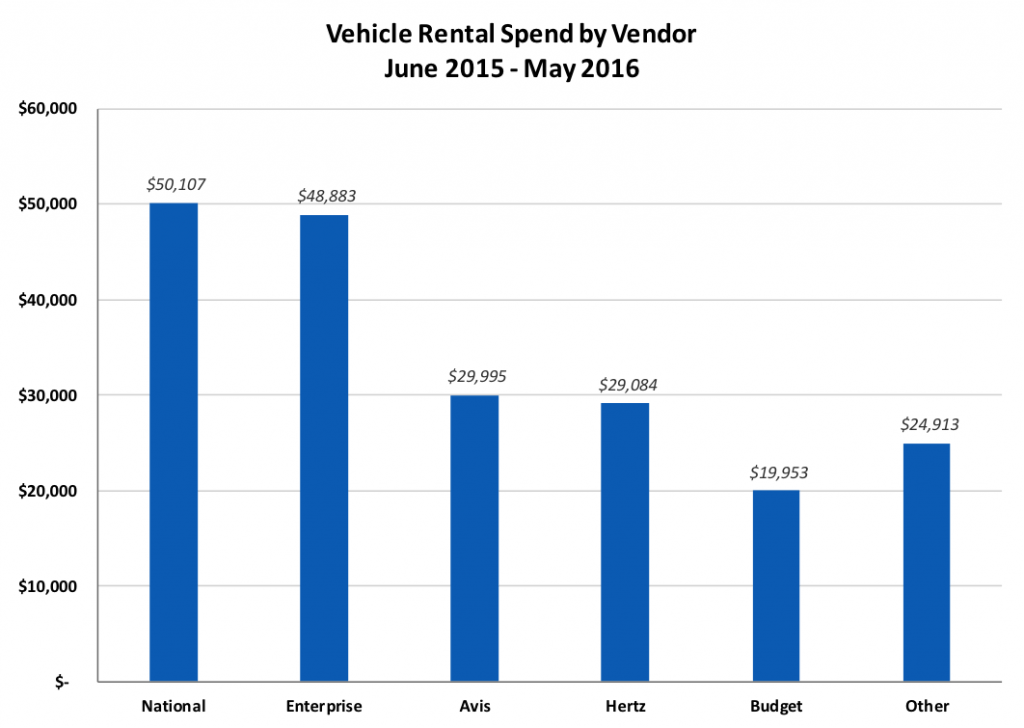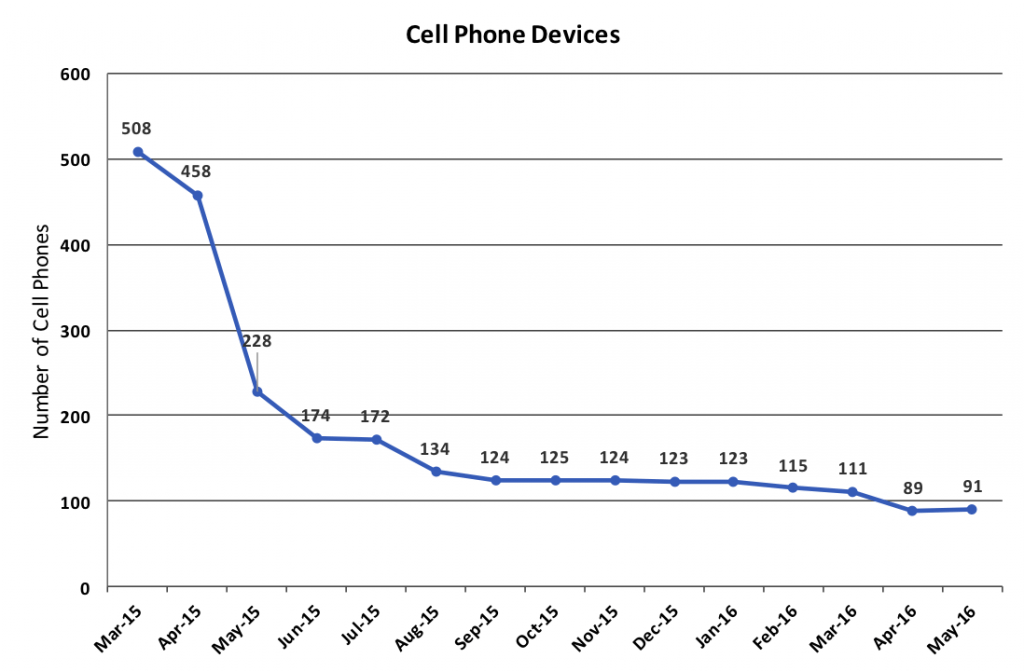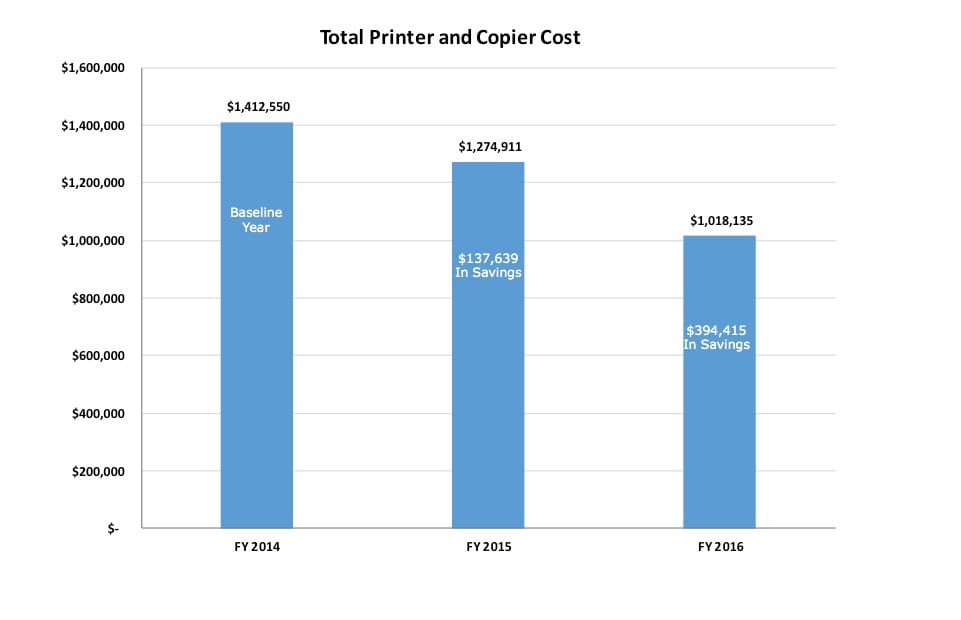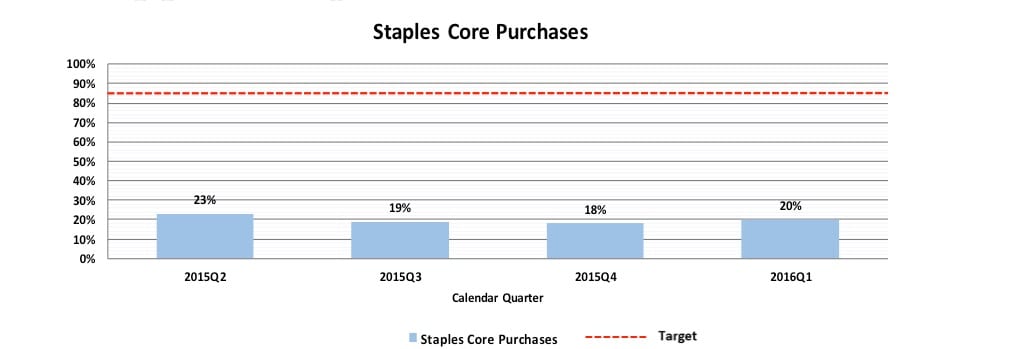Created to improve operations at SMU and identify savings in administrative costs to reallocate to academic purposes, the Office of Operational Excellence has identified key measurements to track progress towards its mission. At the beginning of the Operational Excellence for the Second Century (OE2C) project, research revealed that our peers across aspirational universities are spending a greater percentage of funds on the academic mission versus administration costs.
To measure SMU’s progress toward achieving a competitive balance of academic and administrative spending through bold initiatives that serve the staff, faculty, and students, the Office of Operational Excellence has identified a set of key metrics.
The Purchasing Department is tracking numerous metrics related to OE2C initiatives, including travel, cell phones, printers, and office supplies.
The Purchasing Institutional Metrics Dashboard
Travel Metrics
Goal: To achieve a score of 4 or above.
- American Airlines is reviewing data to prepare possible master agreement for discounts/fee reductions. Proposal is anticipated July 2016.
- Upon reviewing a full year of data (FY2016), SMU’s Purchasing Department has made contact with the national accounts programs for Marriott and Hilton. The Purchasing Department is in the process of scheduling meetings and/or webinars in late July 2016 to discuss the potential to negotiate University-wide discounts.
- “Other” category represents approximately 550 independent and small group hotels.
- SMU’s Purchasing Department has analyzed the spend data for FY2016 and is in the process of price negotiations with Enterprise Holdings, which is the parent company of National and Enterprise. Contract pricing will cover both National and Enterprise. The Director of Purchasing plans to present an exclusive provider recommendation to the VP of Business and Finance in August 2016.
Cell Phones Metrics
- In April 2016, a few coaches left SMU and a few new coaches arrived in May 2016, which accounts for the drop in April and subsequent increase in May.
- Goal: To support minimal number of SMU provided cell phones.
- The amounts spent in June FY2015 were less than the two months following due to refunds received for cell phones turned in.
- Occasional increase in monthly expense may indicate purchase of equipment and/or data overage charges.
- Goal: To decrease expense as much as possible.
Printers Metrics
- The importance of reducing machine count is primarily due to future replacement costs. For example, the average life of a personal printer is 8 years. Therefore, 12.5% of the printers need to be replaced annually. By May 2016, we have reduced the number of printers by 1298, which equates to approximately 162 printers that do not need to be replaced annually. If, for example, the average replacement cost is $300 per unit, this would translate to almost $49,000 of annual cost avoidance. Once the machine count is reduced to 1000, the annual cost avoidance figure will be approximately $56,000.
- Ongoing review and evaluation of the campus print environment will allow SMU to reduce the fleet to 1000 supported printers.
- SMU covers toner, paper, supplies and maintenance cost for supported printers.
- Goal: To reach 1000 supported units. This figure was determined by assigning an approximate 2.5:1 ratio of SMU employees to printer. It is estimated that the goal of reducing printers to 1000 will be reached by September 2016.
- Effective June 1, 2015, SMU entered into a Print Management Services agreement with a preferred vendor (Imagenet).
- Savings are calculated by comparing baseline fiscal year 2014 to each subsequent year.
- Figures for fiscal years 2014 and 2015 are estimates, as copier and printer equipment and supplies were sourced and purchased from multiple vendors and through various processes, making it impractical to track actual expenses.
- Goal: To continue to realize cost savings associated with printing and copy costs.
Office Supplies Metrics
- This metric shows that the organization grants purchasing rights to a limited number of employees to ensure that office supplies are purchased through larger orders, which gives rise to purchase discounts when the order average size is over $275.
- Goal: To maintain the target number of authorized users and avoid having the number increase.
- Average order size over $275 allows SMU to have the best pricing and a 1% discount, which is displayed in the table below the graph.
- The 1% discount is taken off each order and is reflected on the monthly Staples invoice.
- The benefit of the discount is allocated to the budget orgs that placed the corresponding orders.
- Goal: To maintain an average order size of $275 and above, in order to benefit from this discount.
- Prompt pay was first achieved with the November 2015 invoice.
- This discount type is generally taken at time of payment.
- The benefit of the discount is allocated to the budget orgs that placed the corresponding orders.
- Goal: To receive the 2% discount on every invoice by paying the Staples invoices within the discount period.
- SMU receives a 1% rebate, in the form of a check, at the end of each contract year, based on total spend.
- As a result of SMU’s contract with Staples, SMU benefits from discounted pricing ranging from 5% to 75% off retail.
- Contract year is April 1 though March 31.
- The rebate is allocated to the budget orgs that placed the corresponding orders.
- Staples Core is a list of approximately 400 items that have the deepest discount available. Items are identified as “On Contract” in the online shopping site.
- In its efforts to maximize the core items savings, the Purchasing Department works with Staples on a quarterly basis to adjust core items list. In addition, Authorized Users and shoppers will be informed on a regular basis, as determined by the Director of Purchasing, of any updates to the core items listing, as well as of the importance of purchasing items that are on the list.
- To demonstrate the impact of core vs. non-core purchasing, a small sampling of heavily purchased items has been included in the following table:

- Goal: To increase the percent of core purchases to realize the most savings. A target of 85% was set per Staples recommended best practices.
See more metrics in the coming weeks on our website or by subscribing to Operational Excellence’s email digest.













